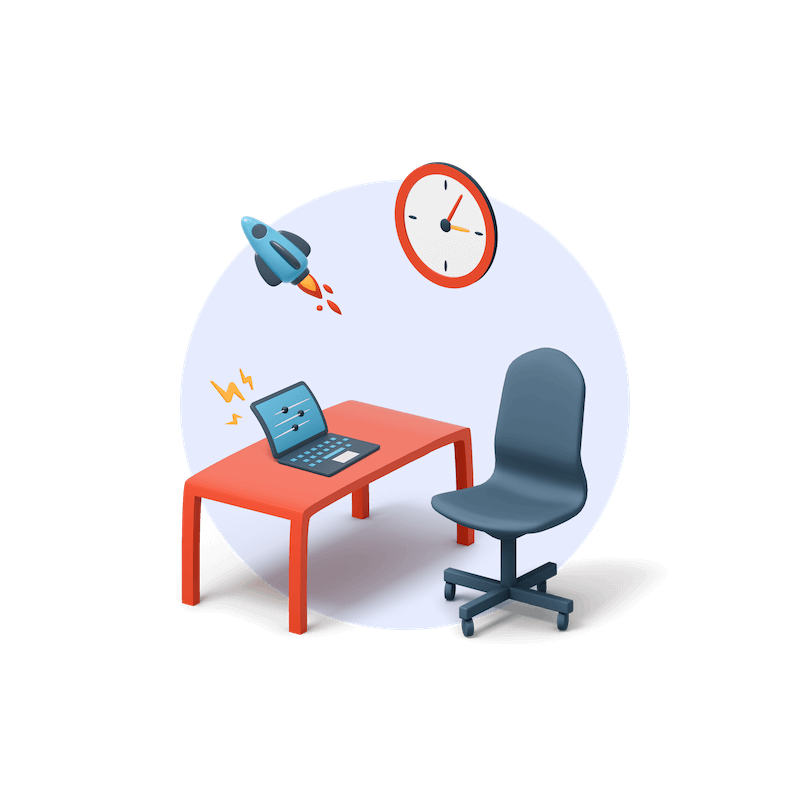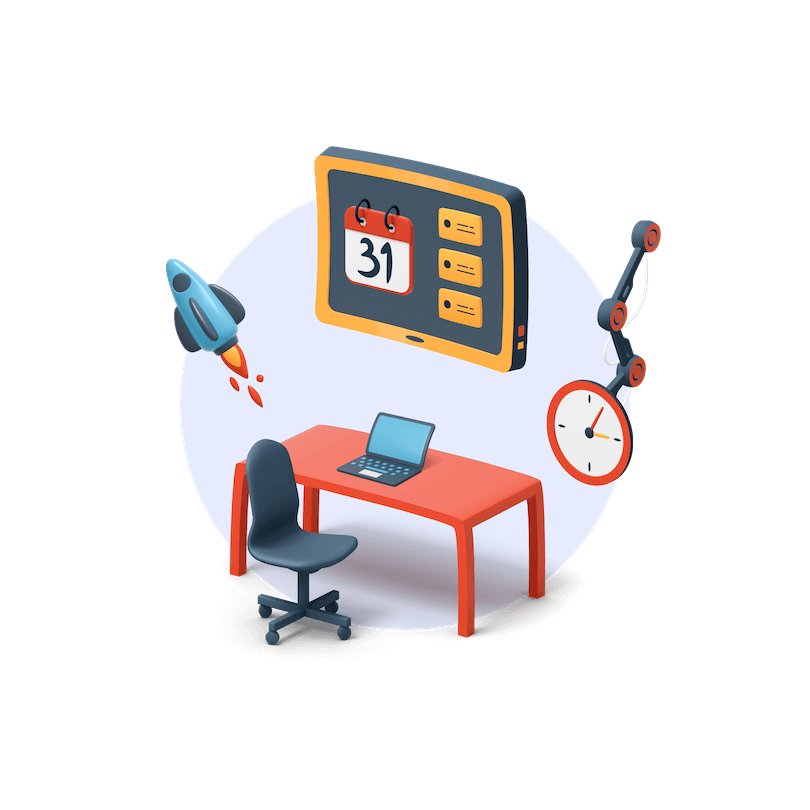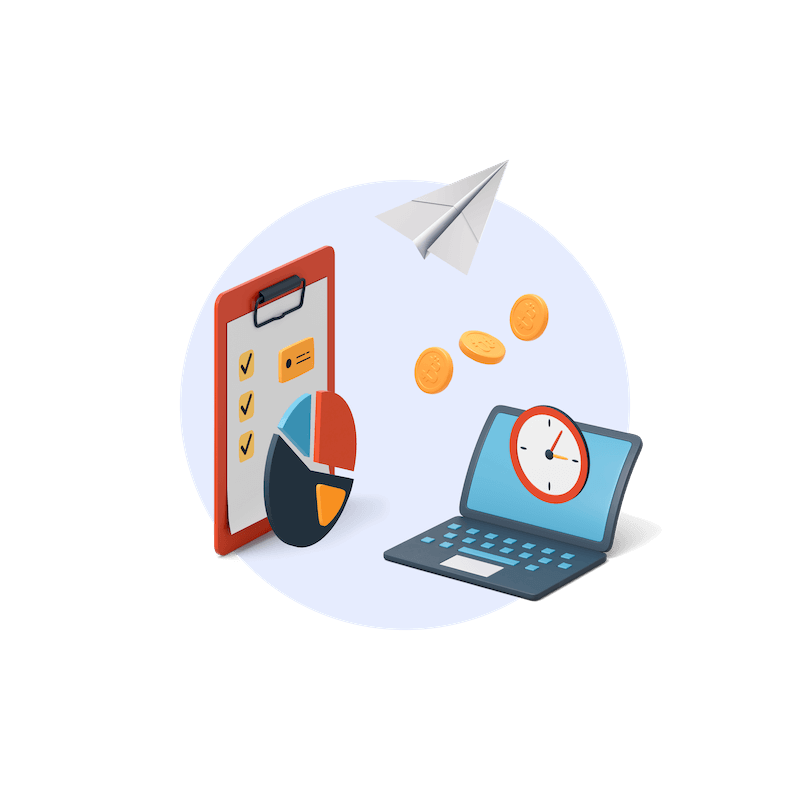People often think of time budgeting as something that is only for those with extremely busy lives.
But the truth is, time budgeting can be helpful for anyone, no matter how busy or how slow their life may seem. In fact, learning to manage your time effectively can help you to live a more productive and stress-free life.
At Quidlo, we’re going to show you why time budgeting is so important and how exactly to implement it into your daily life with a step-by-step process and example.
Ready? Let’s go.
Table of Contents
What is Time Budgeting?
Think: What happens when that monthly paycheck rolls in from your day job? You decide how to allocate the money across all your expenses, right? You budget.
It’s the same principle with time budgeting, except it’s time you’re allocating throughout your day, week, month, or even year instead of money throughout your expenses.
Quite simply: Time budgeting is the process of setting aside time and energy to complete a task or achieve a goal. Basically, it’s breaking down what needs to be accomplished into smaller, more manageable chunks so that you can focus on the most important tasks first.
The idea behind time budgeting is to use your time wisely – prioritizing the projects and tasks that are most important to you, while also making sure you have time for rest and relaxation. This isn’t a new concept, in fact, people like Warren Buffett, Bill Gates, Elon Musk, and millions of other successful workplace professionals and entrepreneurs swear by it with their own versions.
“Famous people do it, so what?”: The Benefits of Time Budgeting
For some, “Oh Bill Gates does it so you should too” isn’t very insightful. To truly appreciate the effectiveness of time budgeting, let’s take a look at what it can actually do for you and how it can help make your life better.
- Makes you prioritize what’s important. Did you know the average worker spends more than half their day on unnecessary tasks? For example, by the time the average worker retires, they’ll have spent at least 7 years in useless meetings, which comes out to about 16 percent of the time you’ll spend at work during your lifetime. By time budgeting, you can better define which activities are necessary and which ones aren’t. This will help you prioritize what is most important so that you don’t waste your valuable time with meaningless tasks.
- Improves focus. We know it’s hard to stay focused in today’s world of distraction. Udemy’s survey found that nearly three out of four workers (70 percent) feel distracted at work, with 16 percent saying they do so almost always. With a time budget strategy, you can allocate specific time slots throughout the day to only work on the tasks that are important, while also giving yourself breaks in between.
- Reduces stress and anxiety from procrastination. A 2015 study revealed a correlation between chronic procrastination and hypertension and cardiovascular disease. 94% of people also claimed that procrastination had a negative effect on their happiness. Budgeting your time eliminates the “Oh no! I didn’t get everything done!” feeling which is a major cause of stress and anxiety.
All in all, you get more done and stay happier, healthier, and more productive.
Making it Work with a Step-by-step: How to Budget Your Time
Now that you know why time budgeting is so important, let’s look at how to actually get started with it. Here’s a simple 4-step process:
Step 1: Write down the tasks you need to complete each day.
If it’s a big task, break it down into smaller chunks. This will make it more manageable and help you stay focused without feeling overwhelmed by the size of the project.
With Quidlo, you can create tasks and label them accordingly so there’s no confusion about what the activity is. You can even assign colleagues to each specific task so everyone knows who’s working on what.
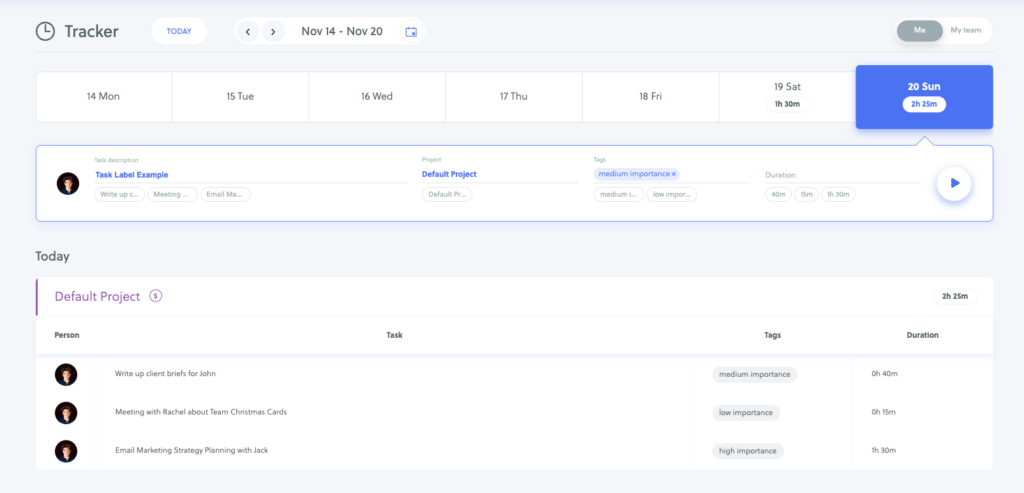
Step 2: Prioritize what needs to be done and when.
Look at the tasks you have written down and assign them a priority level – High, Medium, or Low. This will help you decide what needs to be completed first, and in what order tasks should be worked on. There are a few techniques that you can use to help with prioritization.
- The ABCDE Method: This simple list method lets you assign priorities to tasks based on their importance and urgency. A tasks are the highest priority and E tasks are the lowest.
- The Eisenhower Matrix: This is based on the idea that all tasks fall into four categories: important and urgent, important but not urgent, not important but urgent, and not important and not urgent.
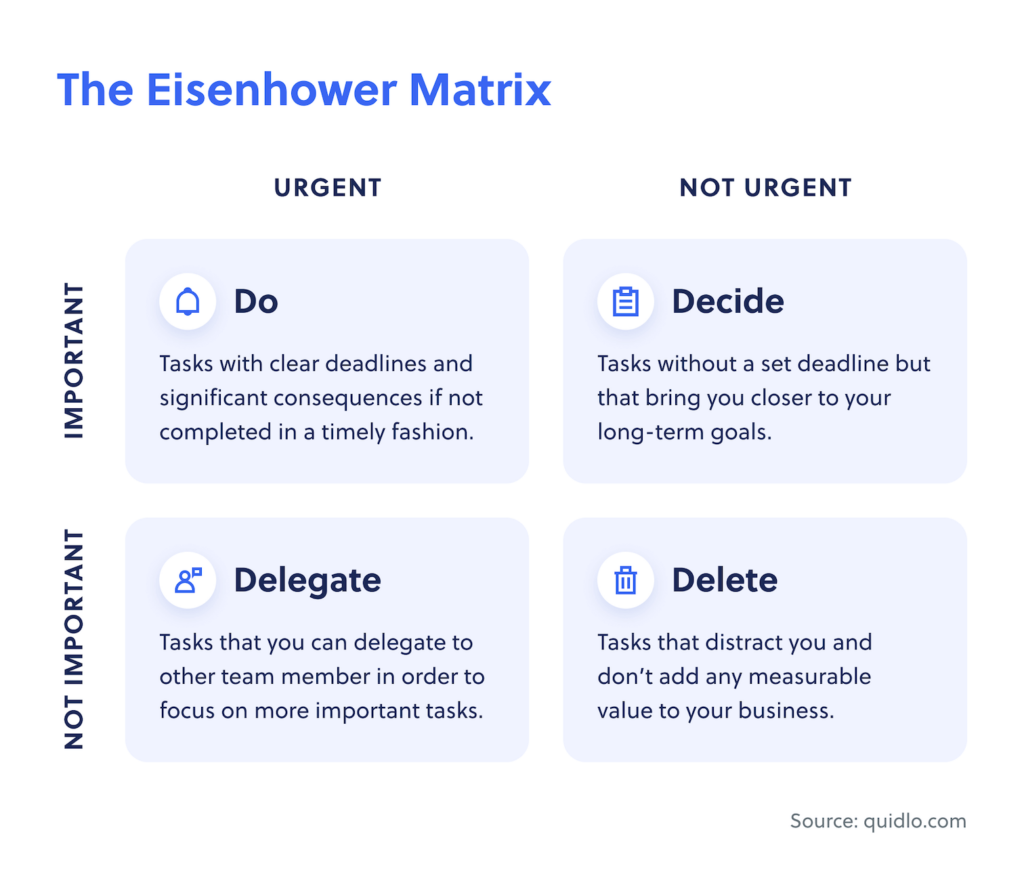
- The Pareto Rule (AKA the 80/20 rule): This is the idea that 80 percent of your output will come from 20 percent of your input. Use this to help you identify which tasks are most important (will be producing most of the output) and should be given priority.
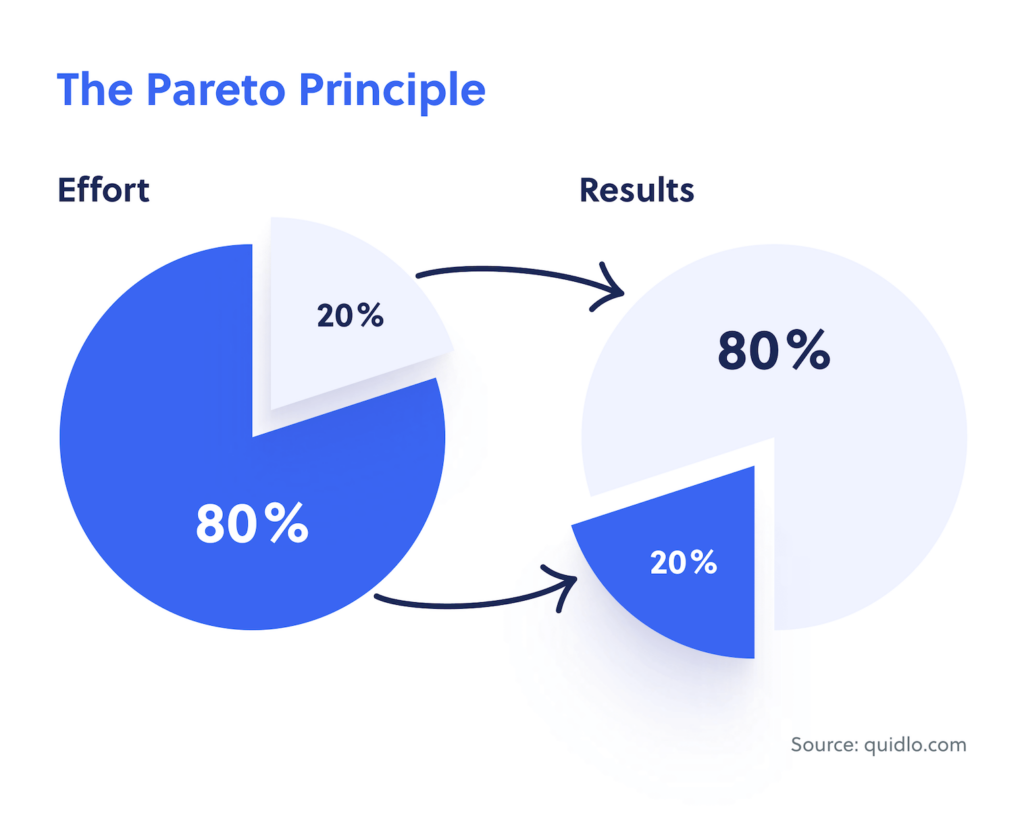
- The Pickle Jar Technique: This is a visual way to prioritize tasks. It allows you to see which ones are more important, and which can possibly be delegated or postponed for later. Imagine a pickle jar filled with either rocks (important tasks), pebbles (somewhat important tasks), and sand (less important tasks). This method also makes you consider water, which represents your private life – AKA the need for a break and connection with family.
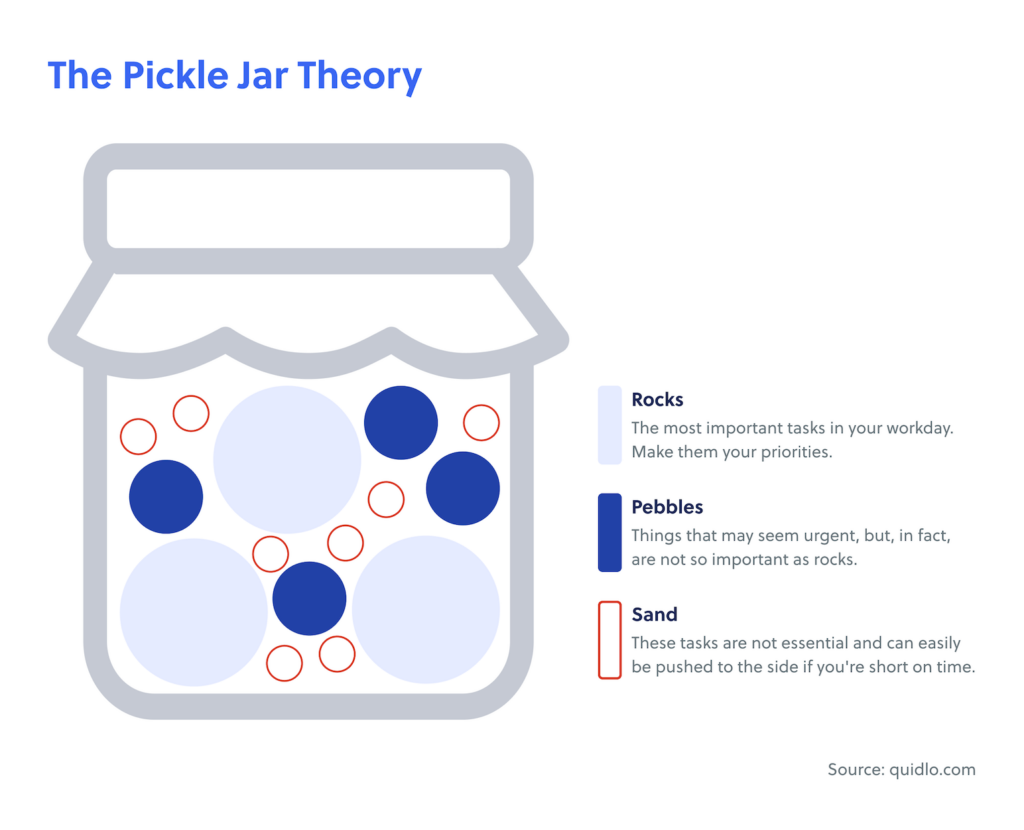
Once you identify and rank all your tasks, you can use Quidlo to label all your activities by importance so you always know what to prioritize with one look.

Step 3: Set aside time for each task.
Once you’ve identified which tasks are most important and urgent, it’s time to allocate a specific amount of time for each one. This helps prevent procrastination and keeps you focused on completing the task at hand.
So how do you know how much time to allocate, exactly? It’s not an exact science, but you should look at the complexity and size of each task and decide what is reasonable for it. It helps to set a timer so you don’t get distracted or lose track of time. Over time, you can get an overview of the hours spent behind certain tasks, and in turn, better estimate the time needed for future tasks.
For example, remote professionals who are always on the ball use Quidlo’s time reporting system to see how much time is going behind different tasks:
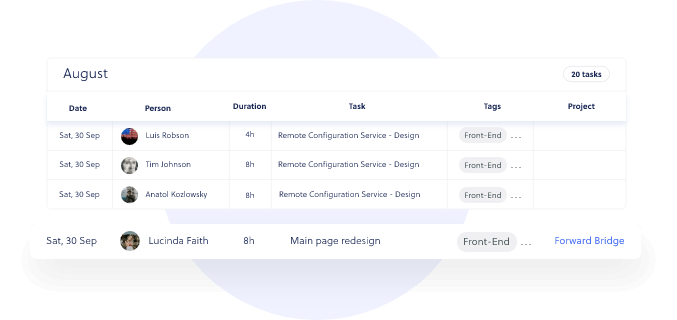
So how do I stay true to these time allotments? (Pro tips for staying focused)
Having a time budget and sticking to it is easier said than done. We all know that distractions are everywhere, and the internet isn’t making it any easier.
Keep these productivity tips in mind for making the most out of time allocation.
- Disable irrelevant notifications on your phone and set a timer. When you set up projects and tasks on Quidlo’s online task manager, you have a better picture of how much time you’re actually spending behind each activity. You can also break down tasks into subtasks and leave comments for yourself throughout the day, which will help streamline workflow and increase productivity along the way.
- Eat the damn frog. This means tackling the hardest and most important task first. It’s very common for people to be more likely to procrastinate when they’re faced with a task they really don’t want to do. So getting this out of the way will make you feel more productive and motivated to keep going with your work.
- Consider using the Pomodoro technique: break down your tasks into 25-minute blocks (or a work period that works for you – could be 50 minutes if you so choose) where you stay focused on the task for that particular block. Take regular breaks in between these blocks to give your brain a rest and come back recharged and productive (usually it’s 5 minutes, but again, this is adjustable).
- Know what time of day you’re most productive. You may know how much time you’re going to spend behind a task, but do you know when during the day you will spend it? If you’re a morning person, try setting aside more important tasks during that time and save the less demanding activities for later. If you’re an evening person, do the opposite.
👉 Related: Best Focus Apps to Avoid Distraction
Step 4: Track and adjust.
The last step is to track your progress and optimize your processes as you go. Quidlo is a great tool for this because it not only tracks how long you spend on each task, but also allows you to see the total duration spent on your projects as a whole, so you gain more insights about your activity over time with custom reports.
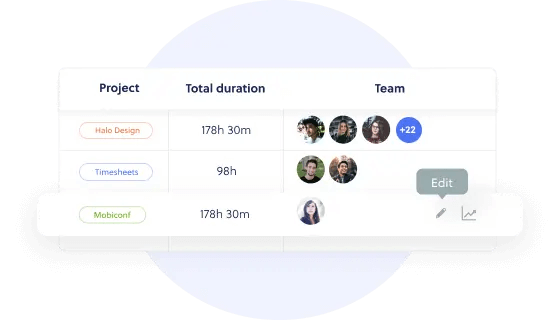
This makes it much easier to identify where you can save time in the future. For example, if you notice that one project took much longer than expected, you can identify bottlenecks through the tasks and streamline the process or delegate some of the work.
But remember that while optimizing your time can be important, be sure to leave some extra buffer so that you’re prepared for any potential setbacks and can thereby avoid feeling burn-out.
Time Budgeting Example: How to apply it in real life
Now that you’ve got all the know-how, tips, and tricks when it comes time budgeting, let’s look at an example that applies this in real life.
Let’s say you need to write a blog post, conduct research for the post, find visuals, and share it on your social media channels. This task could be broken down into the following (referring back to what we mentioned earlier about time blocking, make sure you also have a time of day in mind to complete your tasks when you’re most productive):
- Research – 1 hour (You need to eat the frog to get your research and blog post outline out of the way. Once you know everything you’re going to write, everything else will seem much easier, as the other tasks are not as cognitively demanding).
- Writing – 3 hours (Here you can take advantage of the Pomodoro technique to make sure you’re avoiding burn-out. Break down your writing into 25-minute blocks and take a 5-minute break in between each session).
- Editing – 1 hour (Editing is necessary, but is often something that’s not seen as important. This is where you should make sure editing is a part of your priority list – be it using the Eisenhower Matrix or the Pickle Jar time management technique.)
- Finding visuals – 1 hour
- Sharing on social media channels – 30 minutes
And because you’ve been tracking your time on different tasks like the organized fellow you are, you’re confident that these time estimates are reasonable from past data and experience.
So the total time budget for this task would be 6.5 hours, but again, it’s a good idea to leave an extra buffer so that you don’t feel pressured to come up with the perfect blog post in too short of a time frame.
👉 Related: Learn how to calculate hours worked
Time Budgeting Tools To Make You More Productive
So we’ve gone through the bulk of time budgeting and walked through a real-life scenario that shows how you can apply it. But are there any tools that you can use to make your life easier?
Boy, do we have news for you. There are plenty. Let’s go through some of the best for time budgeting.
- Quidlo is a great tool for tracking your time, as it not only allows you to log the hours you spend on each task but also allows you to create custom reports that give an overview of how your time is being spent. This way it’s easier to identify bottlenecks and optimize your time in the future. If you work with teams, then you can even assign projects and tasks to colleagues which makes team-wide collaboration, communication, and coordination that much easier.
👉 Related: 5 Tips on How to Introduce Time Tracking Solution to Your Team
- Trello is a great option for those who like a visual approach alongside time-tracking. Following the KanBan project management concept, Trello arms you (and your team) with a simple board with different columns for each task allowing you to easily drag and drop tasks as they get completed or moved around, while also giving you a view of what needs to be done at any given moment.
- ProofHub is a handy online proofing software that saves teams loads of time when it comes to the feed-back sharing process. With its intuitive commenting system, you can quickly view and resolve any issues before the task is marked as complete. They also have a mobile app for Android and iOS users, so you can work from wherever you want comfortably.
- Notion is a versatile productivity tool that lets you manage both static documents and dynamic databases. It’s an intuitive way to store notes and ideas, quickly access any project-related information, and collaborate in real time with your team. It’s best if you’re very hands-on with team-wide projects and need to manage different tasks and steps in order to get the job done.
Parting Words
Time budgeting is a necessary skill for anyone looking to be more productive. Once you know the duration of each task, you can structure your day accordingly and ensure all tasks are completed within an appropriate timeframe and with minimal stress.
Remember to get your most important tasks out of the way first, before moving on to the more tedious ones. If you find yourself procrastinating too much, it could be because you’re trying to avoid a daunting task – in which case, eat that damn frog. And of course, take advantage of time and project management tools like Quidlo, Trello, ProofHub, and Notion to make sure you’re optimally using your time, and leave a buffer in case something takes longer than expected.
With these tips and techniques in mind, you’ll be well on your way to becoming an expert time budgeter. Now go forth and be productive!
Psst. Wanna try Quidlo for free and see how your time is being spent? Sign up today (no credit card required).

